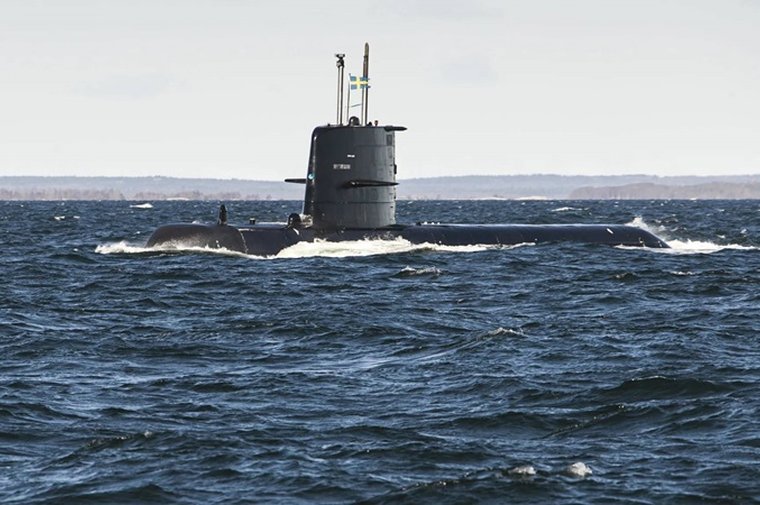Swedish Navy boosts submarine fleet navigation with ECPINS deal
Details
More Products & Services
Products & Services
Shephard Plus Update
Shephard Media
Shephard Plus is updating in June 2018 with rich new capabilities, and is now one of the most cost-effective and valuable aerospace and defence market intell...
Defence Insight
Shephard Media
Some of the things people like you use Defence Insight for:
- Total addressable market sizing ($)
- Competitor analysis
- Cost analysis
- Market forecasting
- Growth identification
- Increasing closing ratio
- Increasing closing order value
- Estimating product potential
- Calculating sales forecasting
- Supply and demand analysis
- Total addressable market sizing ($)
- Competitor analysis
- Cost analysis
- Market forecasting
- Growth identification
- Increasing closing ratio
- Increasing closing order value
- Estimating product potential
- Calculating sales forecasting
- Supply and demand analysis
Military Unmanned Systems Handbook
Shephard Media
The Military Unmanned Systems Handbook (Digital Download) is an international guide to the military UV industry and provides detailed information on air, ground and sea (surface & sub-sea) vehicles as well as subsystems. What's included: Unencrypted 390+ page PDF of equipment and supplier information Market summary
Description
The Swedish Defence Materiel Administration has signed a deal with OSI Maritime Systems to deploy the company's Electronic Chart Precise Integrated Navigation System (ECPINS) system across Sweden's entire submarine fleet and HSwMS Belos, the Swedish Navy's submarine rescue ship.
The Royal Swedish Navy's submarine fleet consists of five diesel-electric submarines, three Gotland-class (A19) boats and two Södermanland-class (A17) vessels, making the fleet 10-strong in total.
ECPINS is an example of a WECDIS (Warship Electronic Chart Display and Information System), meaning it performs high-tech real-time sensor fusion and displays the accurate navigation information that vessels need to ensure they travel and manoeuvre correctly. With a submarine fleet, that includes calculations of depth and dive data.
Related Articles
Royal Navy's new Dreadnought SSBNs to be equipped with OSI's ECPINS
Submarines regularly need to navigate with a minimal above-water signature, which restricts their ability to rely on global navigation satellite systems like GPS. ECPINS solves that problem with a “dived navigation methodology”, according to OSI. That translates as delivering reliable navigation data through advanced algorithms, using only a minimum of sensor inputs that could otherwise give away the submarine's position.
ECPINS is currently used by the navies of eight NATO and allied nations for their submarine fleets, including the UK's Royal Navy, and is the only WECDIS to be independently approved against NATO standards, specificallyWECDIS STANAG 4564.
The Royal Swedish Navy deal includes planned integration of the system onto the nation's two A26 Blekinge-class submarines when they become operational (projected for 2027 and 2028), replacing the Södermanland-class at a programme cost of US$1.5 billion.
OSI will also provide multi-year in-service support to the Royal Swedish Navy's submarine fleet as part of the deal.
Related Programmes in Defence Insight
Blekinge Class (3) [Sweden]
Blekinge Class (1-2) [Sweden]
Related Equipment in Defence Insight
Södermanland Class
Gotland Class
Blekinge Class (A26)
The Royal Swedish Navy's submarine fleet consists of five diesel-electric submarines, three Gotland-class (A19) boats and two Södermanland-class (A17) vessels, making the fleet 10-strong in total.
ECPINS is an example of a WECDIS (Warship Electronic Chart Display and Information System), meaning it performs high-tech real-time sensor fusion and displays the accurate navigation information that vessels need to ensure they travel and manoeuvre correctly. With a submarine fleet, that includes calculations of depth and dive data.
Related Articles
Royal Navy's new Dreadnought SSBNs to be equipped with OSI's ECPINS
Submarines regularly need to navigate with a minimal above-water signature, which restricts their ability to rely on global navigation satellite systems like GPS. ECPINS solves that problem with a “dived navigation methodology”, according to OSI. That translates as delivering reliable navigation data through advanced algorithms, using only a minimum of sensor inputs that could otherwise give away the submarine's position.
ECPINS is currently used by the navies of eight NATO and allied nations for their submarine fleets, including the UK's Royal Navy, and is the only WECDIS to be independently approved against NATO standards, specificallyWECDIS STANAG 4564.
The Royal Swedish Navy deal includes planned integration of the system onto the nation's two A26 Blekinge-class submarines when they become operational (projected for 2027 and 2028), replacing the Södermanland-class at a programme cost of US$1.5 billion.
OSI will also provide multi-year in-service support to the Royal Swedish Navy's submarine fleet as part of the deal.
Related Programmes in Defence Insight
Blekinge Class (3) [Sweden]
Blekinge Class (1-2) [Sweden]
Related Equipment in Defence Insight
Södermanland Class
Gotland Class
Blekinge Class (A26)

Share
Recent Chats
Share via email
Future: handle WhatsApp here
Future: handle LinkedIn here
Future: handle Twitter here
SUBMENU HERE
Share via Chat
Copy Link



